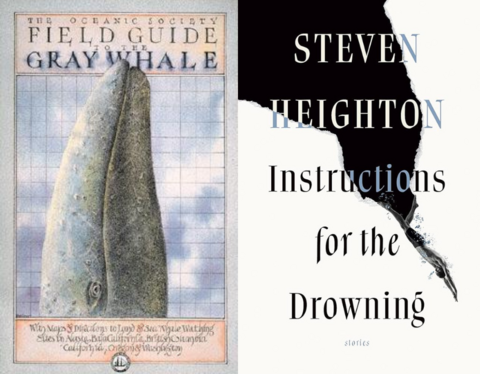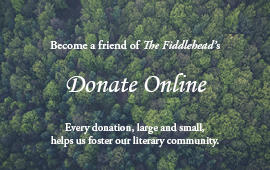
Steven Heighton, Instructions for the Drowning, Biblioasis
I didn’t know about this book, published after Heighton’s death (April 2022). I found it in a small bookstore in Invermere, B.C. The first story in the collection wastes no time delivering the instructions. Drowning men were possessed and they were supernaturally strong. But they were also weak as babies, seeing as they had lost all self-control…A drowning man would have to be knocked out cold. For his own good. Then comes the difficulty in pulling it off, especially when the drowning man is your wife, acting like a large feral cat and you’re choking, gasping, thrashing, unable to swing an arm hard enough, direct a fist precisely enough to get the job done. Heighton enters the trouble less literally in the stories that follow albeit with no less sinew, muscle, and breath. The dead weight of a barbell threatens to crush a protagonist’s neck during an overly ambitious workout. The bodies of refugees are buried in a mass grave. They were washed ashore draped in fake life vests (the handiwork of human traffickers). A plastic surgeon can’t countenance his wife’s aging face, so executes a redo while she’s out cold for another procedure. A father is afraid to lose his son to gaming and fails to see him slip away in a far more tangible way. The human body’s intimacy with the physical world propels the stories. I felt the drag of this as well as its lift. Frequent insights hit with a pow, like… wasn’t panic supposed to unleash superhuman strength? The young mother deadlifting the Toyota off her toddler ... Ah but that was for love. Does anyone love themselves enough to recruit that once-in-a-lifetime strength? Heighton draws wonderful connections across time, as when he link’s Auden’s reflection on a Brueghel painting to a question about how the curators of Street View might overlook a dead body. There’s as much compassion in these pieces as there is violence and pain. For the doctor who has tended to the needs of traumatized soldiers airlifted back from Afghanistan and who could not succeed in killing himself despite multiple dedicated efforts, there remain tears and writing and sea turtles. One baby turtle in particular…It soars outward, the bottom shearing away beneath it, as if in a dream where you’ve been lumbering over the ground, working your arms, trying to lift off, then suddenly you’re weightless, airborne, the earth falling away…he finds himself in his element for the first time.
The Oceanic Society Field Guide to the Gray Whale, Sasquatch Books
I love slight books and I love field guides – the maps, the brief boxed text, the little drawings, the lexicons. And I’ll gladly read about whales anytime if it’s not about hunting them down with all of Melville’s excruciating detail. A good friend gave me this Oceanic Society “chapbook” as a gift. Published in 1989 when the gray whale was endangered, it offers a glimpse into the conservation efforts that resulted in the gray whale being delisted from an endangered status in1994 and the ongoing active protection of gray whale populations today. One of my favourite passages describes “friendly” gray whales in Baja California’s Laguna San Ignacio. At the time of publication, the whales had come to trust the whale watchers there. Recently, female whales have been seen encouraging their calves—nuzzling their young to the rubber rafts and even lifting them up to meet people. Also, who wouldn’t want to know about spyhopping?! Supported by thrusting flukes (or, in the shallow lagoons, by resting the flukes on the bottom), the whale’s head rises 8-10 feet above the surface, sometimes turning slowly to scan the horizon. In this beautifully named act, the whales become their own periscopes. The book contains maps that indicate the best gray whale watching sights in Alaska, B.C., Washington, Oregon, and California. There’s a “further reading” list (including children’s books!) and, of course, a whale sighting log. A sense of mystery and serenity seems to accompany the simple descriptions and clear observations. The text lingers on the details of what is here, demonstrating a disciplined readiness for what might surface next.
— Tonya Lailey lives in Calgary with her two daughters and writes poems, essays and children’s fiction. Her first full-length poetry collection (Farm:Lot 23) will be published by Gaspereau Press in the spring of 2024. Her first children’s book (Bald Owl) was published by Elbow Island Publishers. She holds an MFA in creative writing from UBC
You can find Tonya Lailey’s poetry in Issue 299 Spring 2024. Order the issue now:









